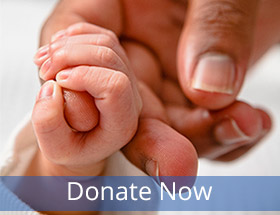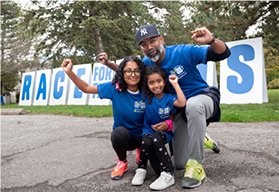CV: Dr. Manuel Gomez
Director of the St. John's Rehab Research Program at Sunnybrook Research Institute sits down to answer a few questions from Eleni Kanavas.
Bio basics: Inaugural director of the St. John's Rehab Research Program at Sunnybrook Research Institute (SRI). Since 2008, director of research at St. John's Rehab Hospital in Toronto. An assistant professor in the department of surgery, and associate professor in the graduate department of rehabilitation science at the University of Toronto. Born in Colombia, completed an MD from Universidad del Cauca and received his general surgery specialist degree from Universidad Central de Venezuela. Immigrated to Canada in 1991 with his wife and two children. Completed a two-year fellowship at Sunnybrook's Ross Tilley Burn Centre and an M.Sc. in 2001 from U of T. His research focus is on burn injury rehabilitation and burn prevention.
Why is the merger of SRI and St. John's Rehab important?
It's a great opportunity because now we are in the same institution, and researchers have access to our facilities, our equipment and experts. This merger fulfils the goal that rehabilitation [starts] from the beginning, and it will cover the spectrum of the continuum of care from admission, to emergency, to acute care, rehabilitation, [and] going back home and to work.
What is your vision as director of the St. John's Rehab Research Program?
To be a leader in rehabilitation research during the next five years. We have five programs for research: burn rehabilitation which is the only one in Ontario; organ transplant rehabilitation, which is the only one in Canada; oncology rehabilitation; musculoskeletal conditions for motor vehicle accidents, trauma and amputations; and neurological conditions for individuals with stroke or Alzheimer's disease.
Why does rehabilitation research matter?
For me, rehabilitation is the new frontier in medicine because we have advanced so much in acute care. Now more people survive from their injuries or conditions [compared to] five or 10 years ago. Rehabilitation plays a role in getting back to the activities of daily living or back to work, and it's necessary to recondition individuals.
What are some advances in rehabilitation therapy?
We are using video games in rehabilitation, Nintendo Wii or virtual reality, because those are very engaging activities and the individual is more motivated to participate in the rehabilitation process.
What is the most rewarding part of your work?
It is the clinical application of the research results, [going] from the bench to the bed, that's the rewarding part.
Where do you see the future of rehabilitation going?
I think rehabilitation will be more involved in all aspects of patient care; [for example], the way that you transport an individual from the place of injury may have an impact on the final outcome. I see rehabilitation embedded into care and not as a separate entity.






